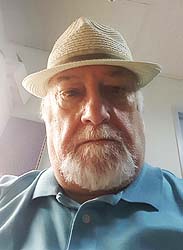 Newsletter 14-21 czerwca 2017
Newsletter 14-21 czerwca 2017
Żydowski Instytut Historyczny
 |
|
SEMINARIUM NAUKOWE
20 czerwca, godz.11:00
PROCES TWORZENIA GETTA WARSZAWSKIEGO W KONTEKŚCIE ORGANIZACJI INNYCH GETT NA TERENIE GENERALNEGO GUBERNATORSTWA
Utworzone w październiku 1940 roku getto warszawskie było największym gettem w Europie. Proces jest powstawania trwał rok. Zmieniały się koncepcje jego lokalizacji, władze niemieckie kilkukrotnie zawieszały prace organizacyjne. Tworzeniu żadnego innego getta nie towarzyszyły tak duże trudności. Dlaczego? Co mówi nam to o znaczeniu gett w niemieckiej polityce antyżydowskiej?
Referat będzie przedstawiał warszawską dzielnicę zamkniętej z perspektywy Niemców, jej organizatorów. Prelegentka prześledzi ewolucję znaczenia pojęcia getto w nomenklaturze nazistów począwszy od lat 30., i skonfrontuje z rzeczywistym gettami tworzonymi od października 1939 roku na terenach okupowanej Polski. Co słowo getto oznaczało w 1940 roku, kiedy Niemcy planowali lokalizację żydowskiej dzielnicy zamkniętej w Warszawie, a co w 1941 roku, kiedy otworzyli kolejny front wojenny? Aby uchwycić ewolucję niemieckiej polityki antyżydowskiej, proces tworzenia getta warszawskiego zostanie przedstawiony w kontekście organizacji gett w Piotrkowie Trybunalskim, Radomsku, Łodzi, Łowiczu oraz Krakowie i Lublinie.
Seminarium odbędzie się 20 czerwca (wtorek) o godz. 11:00 w sali w Błękitnym Wieżowcu. Wstęp wolny.
Justyna Majewska – absolwentka kulturoznawstwa na Uniwersytetu Marii Skłodowskiej- Curie, słuchaczka studiów podyplomowych Exhibiting Contemporary History na Europäisches Kolleg, Uniwersytet Friedrich Schiller w Jenie. Obecnie pracownica działy opracowywania zbiorów w Żydowskim Instytucie Historycznym. Kuratorka galerii Zagłada w Muzeum Historii Żydów Polskich Polin. Stypendystka European Holocaust Research Infrastructure, członkini zespołu redakcji roczniak Zagłada Żydów. Studia i materiały. W Szkoły Nauk Społecznych przy IFiS PAN przygotowuje rozprawę doktorska na temat zmian struktury społecznej w getcie warszawskim w latach 1940-1942.
|
|
|
 |
|
Nalewki. Opowieść o nieistniejącej ulicy.
Otwarcie wystawy
22 czerwca, godz.18:00
Była kiedyś ulica, o której mówiono, że jest sercem żydowskiej Warszawy. Można tam było kupić niemal wszystko, od parasoli u Putermana pod numerem jedenastym, przez części rowerowe i patefony pod trzynastką, po wyroby importowane z Palestyny w sklepie „Tel Awiw” pod piątką. Kłębiący się na ulicy tłum ludzi, wśród których królował język jidysz, co rusz zachodził do oficyn, kupował, sprzedawał i dyskutował na olbrzymich, stanowiących niemal osobne światy, podwórkach. Gdzieś w tle słychać było pisk przejeżdżającego przez środek ulicy tramwaju. Rzut oka na stare zdjęcia pozwala uwierzyć, że było to jedno z najbardziej przeludnionych miejsc w przedwojennej Europie. Tym miejscem była ulica Nalewki.
Tego świata już jednak nie ma. 75 lat temu Niemcy rozpoczęli Akcję Reinhardt, w wyniku której zginęło prawie 2 miliony Żydów polskich, z warszawskiego getta w ciągu dwóch miesięcy do obozu śmierci w Treblince wywiezionych zostało 300 000 osób.
Przedwojenny świat polskich Żydów przestał istnieć.
Dziś jednymi z niewielu materialnych pamiątek po dawnych Nalewkach są biegnące przez ulicę Bohaterów Getta prowadzące donikąd tory tramwajowe oraz położony na skrzyżowaniu z ulicą Długą budynek Arsenału.
Zapraszamy na otwarcie wystawy plenerowej pt. „Nalewki. Opowieść o nieistniejącej ulicy. W 75. rocznicę Akcji Reinhardt”.
|
 |
|
WYNIKI KONKURSU PAMIĘĆ DLA PRZYSZŁOŚCI.
„NIECH TEN SKARB DOSTANIE SIĘ W DOBRE RĘCE”
Z radością informujemy, że XIV edycja konkursu Pamięć dla Przyszłości: „Niech ten skarb dostanie się w dobre ręce” – o losach Archiwum Ringelbluma w 70. rocznicę działalności Żydowskiego Instytutu Historycznego im. Emanuela Ringelbluma” została rozstrzygnięty.
Jury w składzie: Joanna Sobolewska-Pyz, Aleksandra Kopystyńska, Ewa Chałasińska (Stowarzyszenie Dzieci Holokaustu w Polsce), Zofia Mioduszewska (Muzeum Historii Żydów Polskich POLIN), Ewa Bobińska (wieloletnia koordynator konkursu z ramienia Ośrodka Rozwoju Edukacji) oraz Anka Chylak, Agnieszka Kajczyk, Olga Szymańska i Bartek Borys (Żydowski Instytut Historyczny) po zapoznaniu się ze wszystkimi niezwykle ciekawymi pracami postanowiło nagrodzić i wyróżnić zespoły z następujących szkół.
|
|
|
|
|
twoje uwagi, linki, wlasne artykuly, lub wiadomosci przeslij do: webmaster@reunion68.com








 Polska Agencja Prasowa
Polska Agencja Prasowa